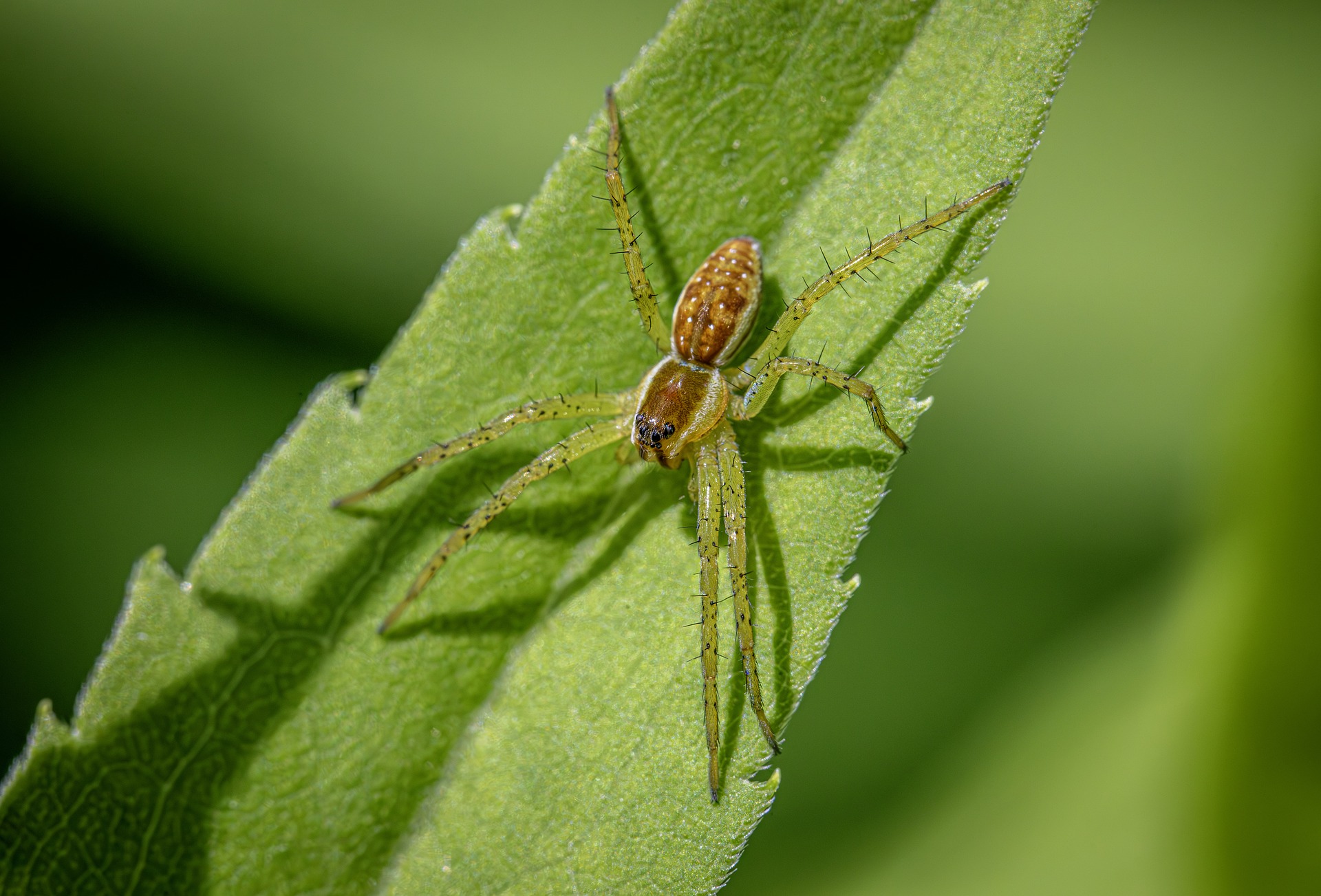The Raft Spider (Dolomedes fimbriatus) is a fascinating species known for its ability to walk on water and hunt prey, making it an adept predator in aquatic environments. Here’s an overview of its characteristics and behavior:
Appearance:
- Size: Adults can have a body length of up to 2 centimeters (excluding legs), making them relatively large spiders.
- Coloration: Typically brown or dark grey, sometimes with lighter markings. The abdomen often has distinctive patterns that help camouflage it against various backgrounds.
- Legs: Long and slender, well-adapted for walking on the surface tension of water.
Habitat:
- Preferred Habitats: Raft spiders are primarily found in wetland habitats such as marshes, ponds, and slow-moving streams. They are often associated with vegetation or floating debris where they can rest and hunt.
- Geographic Range: They are native to parts of Europe and Asia, particularly in regions with suitable aquatic habitats.
Behavior:
- Water Adaptations: Raft spiders have hydrophobic hairs on their legs that allow them to skate effortlessly on the surface of water without sinking.
- Predatory Behavior: They are skilled hunters, preying on insects and even small vertebrates that fall into the water or come near the surface. They can detect vibrations on the water’s surface to locate potential prey.
- Maternal Care: Females exhibit maternal care, guarding their egg sacs and young spiderlings until they are ready to disperse.
Life Cycle:
- Egg Sac: Females construct silk egg sacs that they attach to vegetation near the water’s edge. The egg sac is carefully guarded until the spiderlings hatch.
- Spiderlings: Once hatched, spiderlings stay close to the mother for protection and learn hunting techniques before dispersing.
- Development: They undergo several molts as they grow, gradually increasing in size until reaching adulthood.
Ecological Role:
- Predation: Raft spiders play a crucial role in controlling insect populations in their aquatic habitats, contributing to the balance of the ecosystem.
- Indicator Species: Their presence or absence can indicate the health of wetland ecosystems, as they are sensitive to changes in water quality and habitat degradation.
Conservation Status:
- Threats: Habitat loss and degradation due to urbanization, pollution, and climate change pose significant threats to the survival of raft spiders.
- Conservation Efforts: Conservation efforts often focus on preserving and restoring wetland habitats, which are essential for the survival of these and other species dependent on aquatic environments.
Interesting Facts:
- Hunting Techniques: Raft spiders can dive underwater to capture prey and then return to the surface to consume it.
- Camouflage: Their coloration and patterns help them blend into their surroundings, making them less visible to both prey and predators.
- Behavioral Studies: Researchers study their behavior to understand adaptations to aquatic environments and predator-prey interactions.
In summary, the Raft Spider (Dolomedes fimbriatus) is an impressive predator adapted to aquatic habitats, known for its ability to walk on water and hunt effectively. Its role in controlling insect populations and sensitivity to habitat conditions make it an important species for conservation efforts focused on maintaining wetland biodiversity.
Visited 969 times, 9 visit(s) today
Views: 1550
